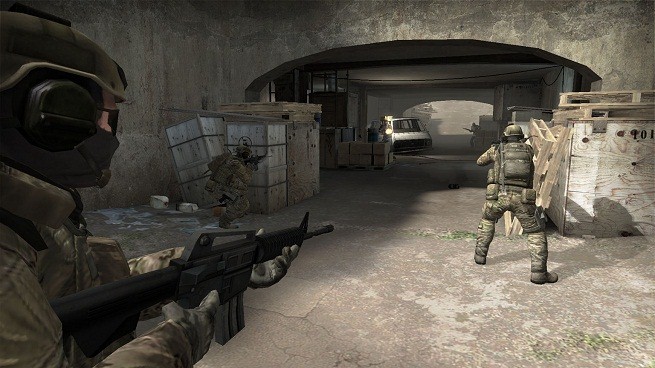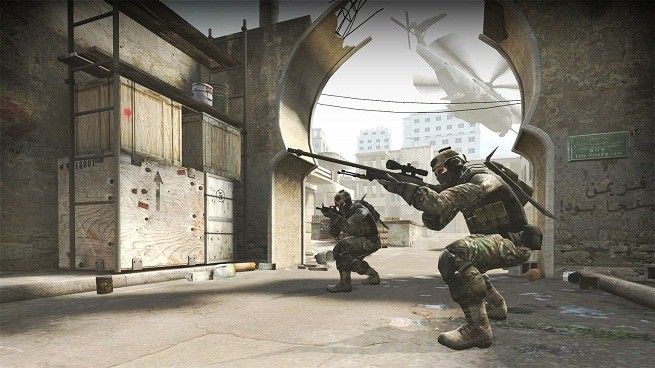If someone asked me for the name of the game I’ve clocked the most hours in to this day, I’d confidently respond with Counter-Strike (CS). Originally a user-crafted modification for Valve’s first-person shooter Half-Life in 1999, CS bowled over the PC gaming community with its team-based straightforwardness, gracefully balanced map design and arsenal, and competitive appeal.
Now, Valve wants that same magic on consoles. Releasing on August 21, 2012 for the PC, Mac, PlayStation 3, and Xbox 360, Counter-Strike: Global Offensive retains the aged mod’s core design while touching up its graphics, loading up more weapons and maps, and adding a new mode. Pretty standard stuff for ported re-boots, but CS:GO’s emphasis clearly lies upon making the old flow with the new.
The result? Something consoles needed for a very long time: simplicity. For an explanation, check out three design mechanics powering CS:GO below, and make sure to leave a comment on what you think of its differences versus other shooters.
No aim-assist. Like its predecessor, CS:GO’s armory of rifles, pistols, shotguns, and submachine guns disfavor sprayed automatic fire, a staple veteran CS gamers instantly recognize. Similarly themed console titles with robust multiplayer aspects such as the Battlefield and Call of Duty series offer gamers the familiar hand-hold aim-assist provides, but no dice with CS:GO – you’ll need accurate, precise fire to drop tangos downrange, an especially crucial skill with the lack of iron-sights and sprinting. A Valve representative at CS:GO’s cubby hole at E3 explained the lack of aim-assist aligns with the developer’s intentions of transferring the same classic CS gameplay PC gamers know and love to consoles. Time to brush up on those recoil patterns.
No killstreaks, perks, or clunky experience point systems. CS’ most popular mode, Demolition, shot to the top for many reasons. It built upon multiplayer shooter gaming’s team deathmatch structure with a bomb defusal aspect promoting coordination and communication beyond a kill-or-be-killed objective. That doesn’t mean the latter’s action sours in comparison. Far from it – most shootouts occur within the hallways and chokepoints leading up to each map’s bomb zones.
As in most shooters, victory lies within superior positioning and a steady trigger. Unlike most of today’s shooters, however, CS:GO doesn’t need airstrikes, attack helicopters, gold-plated guns, or “+2 sprint speed of the wolf” perks to shine. Showing off your personal flair involves loading up with your preferred weaponry, purchased via cash accrued by completing objectives and racking up kills.
No prone shenanigans. Know what a “dropshot” is? If not, take a look at the linked video. Essentially, a dropshot – also known as a “dolphin dive” in Battlefield circles – snaps a player into the prone position with minimal loss of accuracy, a frustratingly unrealistic I-win move during engagements. Thankfully, CS:GO’s terrorist and counter-terrorist teams stay on their feet, with the option to crouch down for added accuracy at the cost of mobility.
VentureBeat's mission is to be a digital town square for technical decision-makers to gain knowledge about transformative enterprise technology and transact. Learn More


